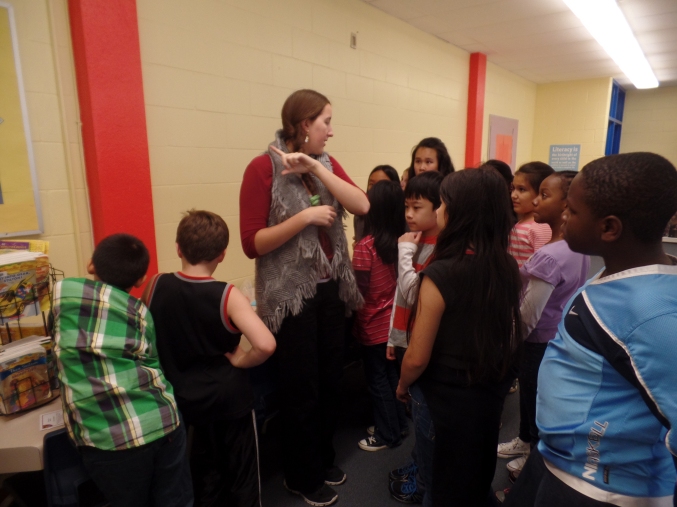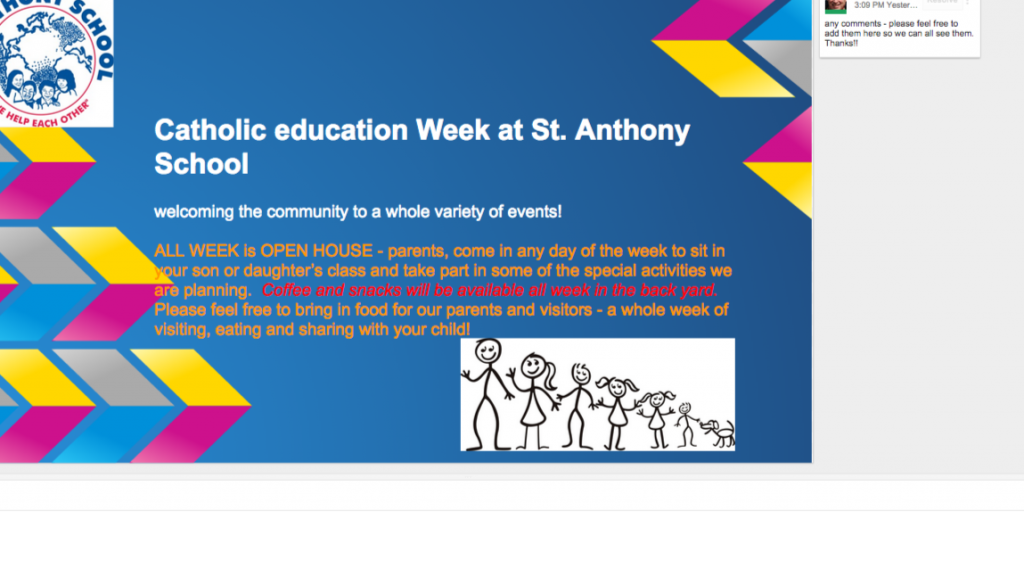by Maria Popova Brain Pickings – some snipits from a great post – cathy, can we get this book??
“Stories are a meal. But poetry is a glass of water, perhaps even a single drop that will save your life.”
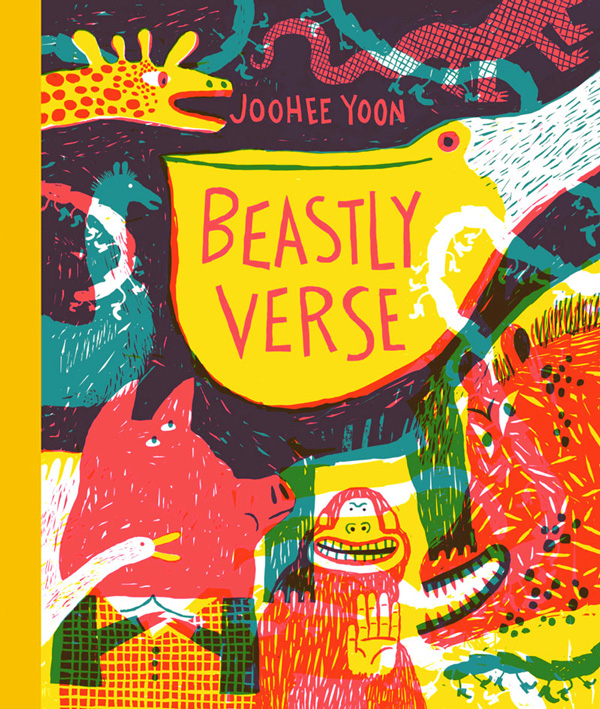 Half a century after Beastly Boys and Ghastly Girls, legendary artist Tomi Ungerer’s illustrated compendium of famous authors’ verses about brothers and sisters, another singular illustrator of our own era applies the concept to a different domain of the human experience — the inclination toward thinking with animals in making sense of our own lives.
Half a century after Beastly Boys and Ghastly Girls, legendary artist Tomi Ungerer’s illustrated compendium of famous authors’ verses about brothers and sisters, another singular illustrator of our own era applies the concept to a different domain of the human experience — the inclination toward thinking with animals in making sense of our own lives.
In Beastly Verse (public library), her spectacular picture-book debut, Brooklyn-based illustrator and printmaker JooHee Yoon brings to vibrant life sixteen beloved poems about nonhuman creatures, real and imagined — masterworks as varied in sentiment and sensibility as Lewis Carroll’s playful “The Crocodile,” D.H. Lawrence’s revolutionarily evolutionary homage to the hummingbird, Christina Rossetti’s celebration of butterfly metamorphosis, and William Blake’s bright-burning ode to the tiger.

What makes the book doubly impressive is the ingenuity of its craftsmanship and the striking results it produces. Trained as a printmaker and fascinated by the traditional, industrial techniques of artists from the first half of the twentieth century, Yoon uses only three colors — cyan, magenta, and yellow — on flat color layers, which she then overlaps to create a controlled explosion of secondary colors.
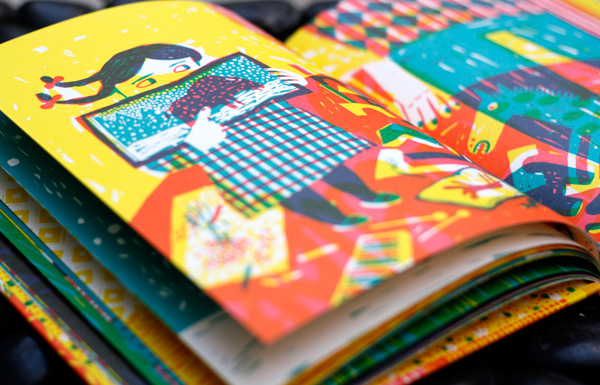
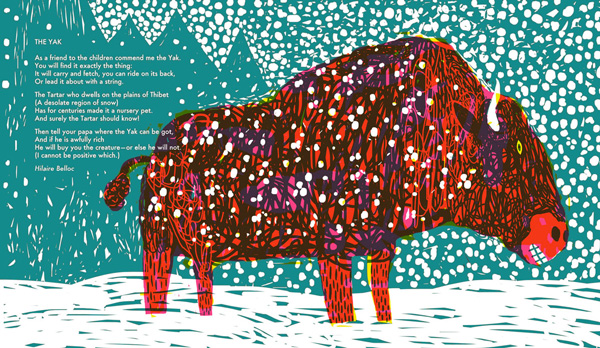
A gladdening resonance emerges between her printmaking process and the craftsmanship of poetry itself — using only these basic colors and manipulating their layering, Yoon is able to produce a kaleidoscope of emotion much like poets build entire worlds with just a few words, meticulously chosen and arranged.
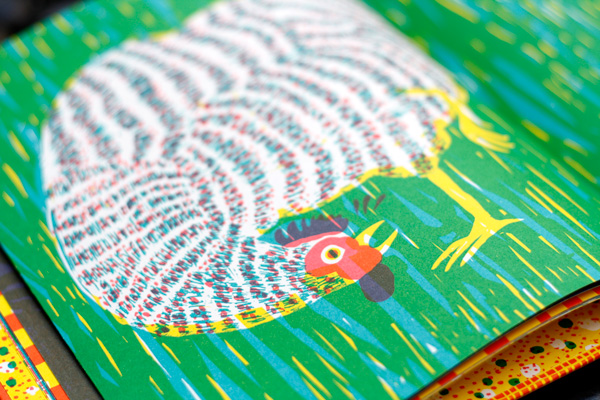
Yoon explains her process:
Seen alone, each layer is a meaningless collection of shapes, but when overlapped, these sets of shapes are magically transformed into the intended image. To me the process of creating these images is like doing a puzzle, figuring out what color goes where and to make a readable image… There is a luminous brilliant quality to the colors when images are reproduced this way that I love.
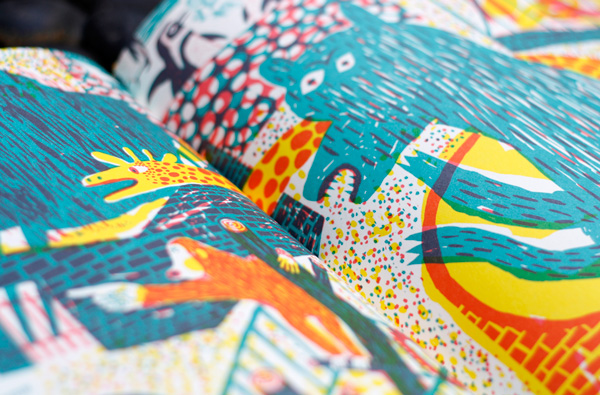
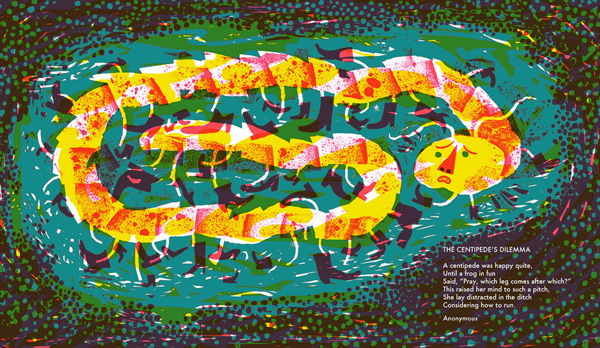
The project, four years in the making, comes from Brooklyn-based independent picture-book powerhouse Enchanted Lion Books — creator of consistently rewarding treasures — and was a close collaboration between Yoon and ELB founder Claudia Zoe Bedrick, an immense poetry-lover herself, who became besotted with poetry early and has remained bewitched for life:
For my 8th birthday, my dad gave me a book calledReflections on a Gift of Watermelon Pickle: a book that now sits on my teenage son’s shelf. His inscription: Stories are a meal. But poetry is a glass of water, perhaps even a single drop that will save your life. At the age of eight, I didn’t fully understand what he meant, but I came to, and have ever since thought of poetry as water: essential, calm, churning, a vortex of light and shadow, refreshingly cool, pleasingly warm, and sometimes just hot enough or cold enough to jolt, charge, render slightly uncomfortable, and bring one fully, deeply to life once again.
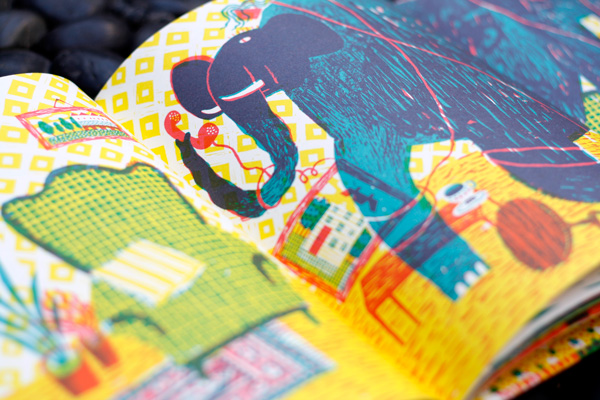
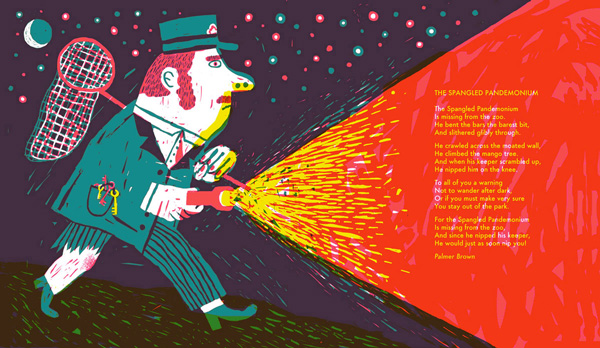
Adding to the pictorial delight are four gatefolds out of which the elephant of Laura E. Richards’s “Eletelephony” marches into the living room, Palmer Brown’s spangled pandemonium hides from its hunter, D.H. Lawrence’s hummingbird stretches its beak across evolutionary time, and Blake’s tiger marches majestically into the jungle.
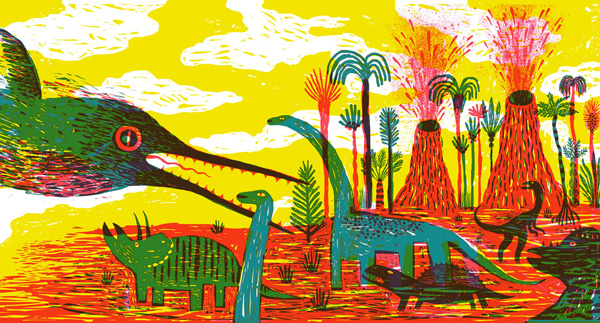
HUMMING-BIRD
I can imagine, in some otherworld
Primeval-dumb, far back
In that most awful stillness, that only gasped and hummed,
Humming-birds raced down the avenues.
Before anything had a soul,
While life was a heave of Matter, half inanimate,
This little bit chipped off in brilliance
And went whizzing through the slow, vast, succulent stems.
I believe there were no flowers, then,
In the world where the humming-bird flashed ahead of creation.
I believe he pierced the slow vegetable veins with his long beak.
Probably he was big
As mosses, and little lizards, they say were once big.
Probably he was a jabbing, terrifying monster.
We look at him through the wrong end of the long telescope of Time,
Luckily for us.
D.H. Lawrence
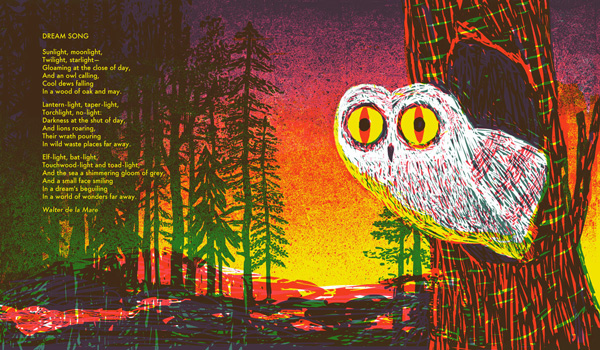
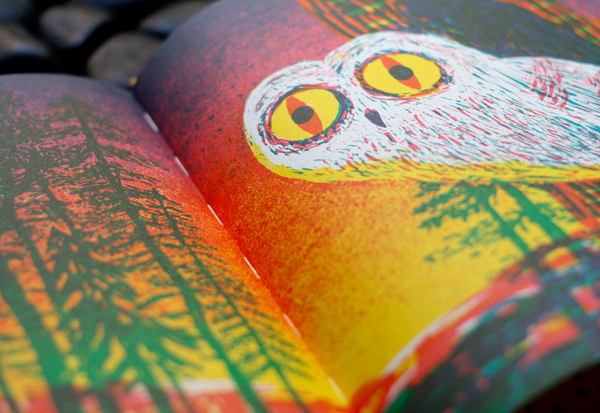
DREAM SONG
Sunlight, moonlight,
Twilight, starlight —
Gloaming at the close of day,
And an owl calling,
Cool dews falling
In a wood of oak and may.
Lantern-light, taper-light,
Torchlight, no-light:
Darkness at the shut of day,
And lions roaring,
Their wrath pouring
In wild waste places far away.
Elf-light, bat-light,
Touchwood-light and toad-light,
And the sea a shimmering gloom of grey,
And a small face smiling
In a dream’s beguiling
In a world of wonders far away.
Walter de la Mare
Complement Yoon’s immeasurably wonderful Beastly Verse with French graphic artist Blexbolex’s similarly printed, very differently bewitching Ballad, then revisit this fascinating exploration of why animal metaphors enchant us.

Our first tree planted by Paul Dewar in the Asphalt to Oasis drive. More planning for depaving this week with Ecology Ottawa this Tuesday
St. Anthony this week
Monday, April 27
Mrs. Rupnik with Digital – Ms Rupnik Camera workshop….Elizabeth Valiquette and Kathi Elborn
hip hop class at lunch
Lockdown practice –
1:00 PM Krista out (PM)
Tuesday, April 28th
chess club at lunch
Cathleen O’Connell to read with Mrs.Rupnik’s class
IPRC St. Marguerite d’Youville-Teresa, Geraldine- Sabina covering
9:30-9:45 Dorothy reading with Mrs. Rupnik’s class
Depave Ottawa Ecology Ottawa meeting at school 2:00 PM
Wednesday, April 29th
principals meeting– Paul out all day
Little Horn Theatre – Chad Wolfe (juniors)
* MUSIC/FIDDLE WITH CHAD WOLFE
9:45-10:00 recess
10:00-10:40 (24) Gr 4/5
10:40-11:15 (24) Gr 5/6)
get ready for lunch upon dismissal
Ryan and Meg @ K-2 Workshop all day
Thursday, April 30
Recycling Day – (black and blue bins open please)
Maker Faire – 10:00 AM – 2:00 PM – see more here
Young Rembrandts – 3:15 PM
Friday, May 1st
National Denim Day: Breast Cancer
Guest Reader in Mrs. Rupnik’s class – (AM)
Little Horn Theatre St. Anthony’s *AGRI ARTIST STORY TELLER
*AGRI ARTIST STORY TELLER Angela Hallendy
JK/SK 8:30-9:00 (20)
JK/SK 9:00-9:30 (20)
School Profile Meeting – 1:00PM Paul and Geraldine
Guest Reader in Mrs. Rupnik’s class (PM)
St. Anthony Superstars – 2:45 PM
Saturday, May 2
Outdoor Curriculum Workshop
Outdoor Curriculum Workshop on Saturday, May 2nd, 9 to 12, followed by a light lunch.
Andrew Harvey will be co-facilitating with a teacher from OCDSB, Stephen Skoutajan.
The days and times are consistent but the topics vary. On any given day, at any particular time you can find educators joining together for a discussion on a topic  related to their subject area, students, or profession. These discussions happen on Twitter, Google Communities, Voxer, and other social media platforms. However, have you ever wondered what percentage of educators use social media? The ones that do use it are called connected educators. I have no statistics on this but believe the actual percentage, compared to the total number of educators in the world, is probably low.
related to their subject area, students, or profession. These discussions happen on Twitter, Google Communities, Voxer, and other social media platforms. However, have you ever wondered what percentage of educators use social media? The ones that do use it are called connected educators. I have no statistics on this but believe the actual percentage, compared to the total number of educators in the world, is probably low.
Thinking back to when I first connected, I did not know where to begin, who to follow, or how to connect. Since those first days in 2012 I’ve figured it out along the way. For me, and many connected educators, this opportunity to be connected is of great professional value. The mere fact that I can simply jump on a social media platform of my choice and immediately connect to, learn from and collaborate with other educators based on an interest is simply amazing.
Over the years many connected educators have made an effort to help connect those educators who are not connected. On a recent #satchat discussion we discussed it with the topic being To Connect or Not Connect?. So many great ideas about why we should connect, what the value of being a connected educator has on our profession, and how to use it to improve ourselves were provided by the participants. During the discussion our #satchat team (@BradMCurrie @wkrakower @ScottRRocco) launched our next effort to help colleagues connect.
It is Connect an Educator Day.
The purpose of this day will be for connected educators to help a colleague who is not connected to connect on May 2, 2015. For those looking to participate here is how it will work:
Prior to May 2, 2015
- Model and demonstrate the value of being a connected educator with colleagues who are not connected.
- Encourage educators not connected to start a social media account.
- Show educators not connected what is available to them when they connect (resources, information, colleagues, etc.)
On May 2, 2015
- Have them join (and you too) #satchat at 7:30am EST for Connect an Educator Day.
- #satchat will lower the total number of questions to 4 during the chat to slow down the discussion and encourage the newly connected educators to participate.
- Resources, links, videos and other information will be provided to the newly connected educators who are participating.
Connect an Educator Day is designed to encourage those who have yet to connect to social media to do so with help of you, the connected educator. Will you help an educator connect? Will you be part of Connect an Educator Day? Let us know by leaving a comment at the end of this post.






